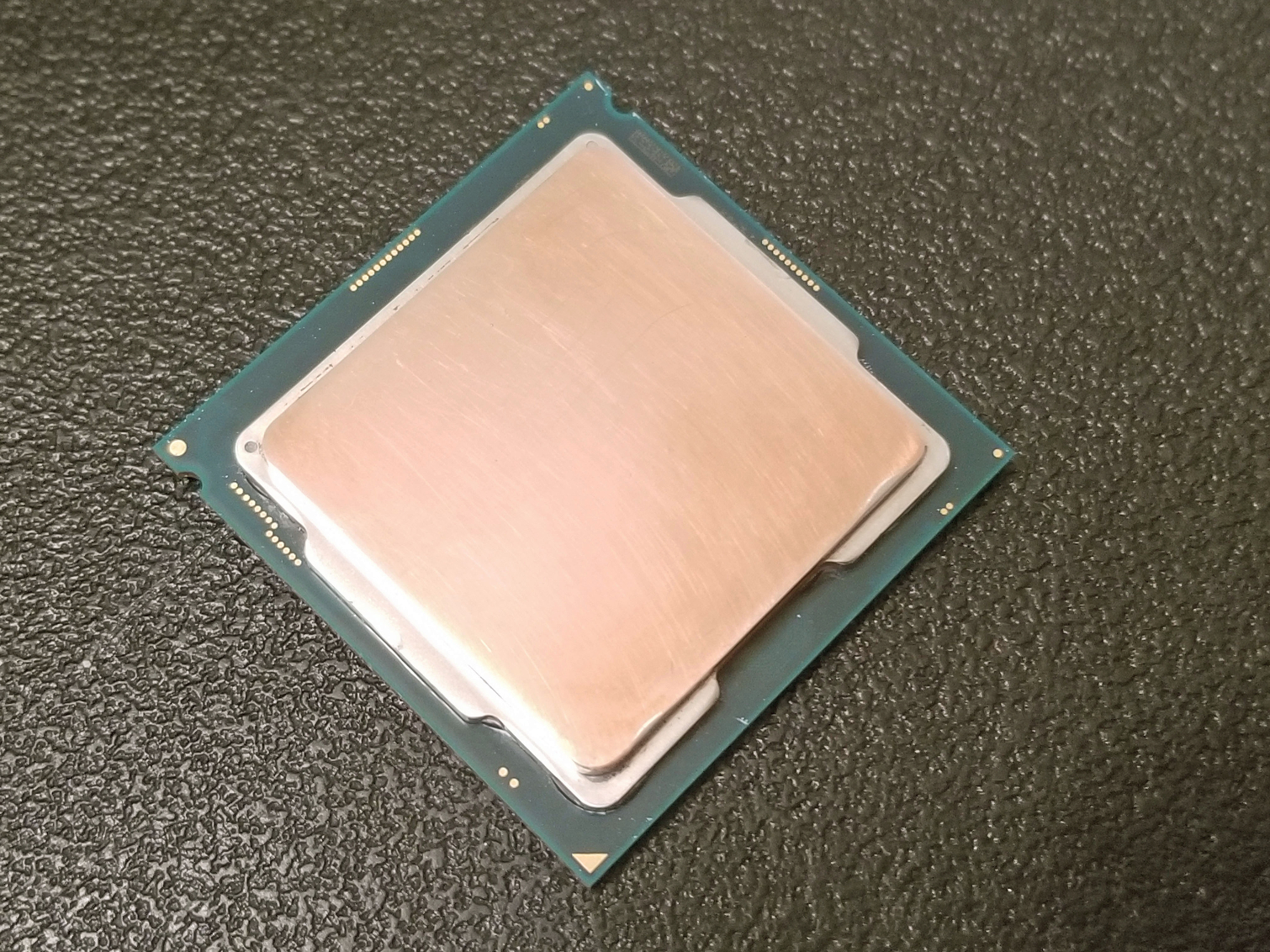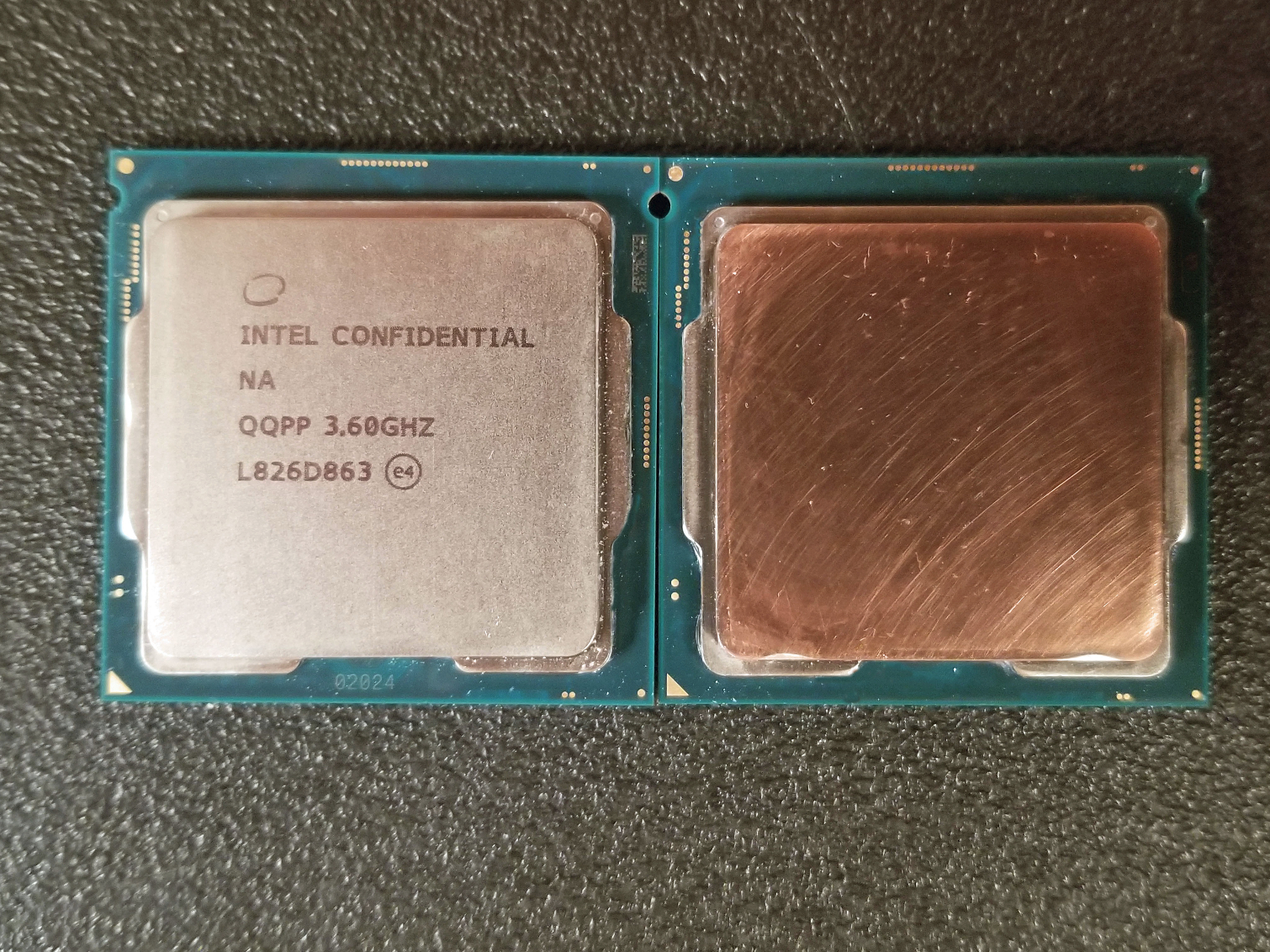Tom's Hardware Verdict
Intel’s Core i9-9900KF lacks integrated graphics, but includes all of the other features you get from Core i9-9900K, including eight cores, high frequencies, and a solder-based thermal interface material for improving cooling performance. Like its counterpart, the Core i9-9990KF is the fastest mainstream processor on the market. But unless it lands on shelves at a significant discount, you're better off waiting for the -9900K to enjoy better availability.
Pros
- +
Performance in both single- and multi-threaded workloads
- +
Solder TIM
Cons
- -
No integrated graphics
- -
Similar price as Core i9-9900K, despite disabled graphics
- -
Cooling requirements
- -
High power consumption under heavy load
Why you can trust Tom's Hardware
No Graphics and No Discount

Core i9-9900KF marks a shift in Intel's strategy as the company begins selling processors with disabled graphics engines for the first time. The -9900KF isn't really new at all, though. Rather, it features the same 8C/16T configuration as Intel's celebrated Core i9-9900K. Aside from the lack of on-die graphics, both chips should be otherwise identical.
That's good news for the -9900KF because Core i9-9900K is a winner. It barreled onto the scene last year to become Intel's highest core count model for mainstream platforms. Armed with eight cores and 16 threads, Core i9-9900K established itself as the fastest desktop processor we've ever tested.
But despite impressive performance, Intel can't keep its most popular CPUs on store shelves. The company is grappling with a production shortage of 14nm parts due to record demand and painful setbacks delaying its 10nm process. As a result, many models are marked up severely or simply unavailable.
Surprisingly, Intel decided to boost output by selling new F-series processors with disabled on-die graphics engines. These CPUs suffered defects during manufacturing that would have rendered their graphics subsystems unusable. In the face of a severe shortage, however, Intel figured out how to boost production by resurrecting chips that would have otherwise been considered defective.
Now, you'd expect to pay less for a CPU with fewer features. But Intel assigns its F-series models the same MSRP as existing processors with functional graphics. This gives vendors the green light to charge premium prices for handicapped chips, which is exactly what's going on. The Core i9-9900KF isn't widely available on Newegg or Amazon. However, when you do find it available for preorder on sites like B&H Photo, the processor oddly commands a ~$55 premium over Intel's standard -9900K.

Intel isn't sampling the Core i9-9900KF to press. Fortunately, we were able to borrow one from extreme overclocker Allen "Splave" Golibersuch for review. Splave lapped the chip, meaning he thinned the integrated heat spreader by sanding it down, to improve thermal transfer efficiency. Otherwise, as you can see in the picture above, both models are physically identical.
As far as we can tell, the only reason to buy a -9900KF is immediate availability when you see it in stock. Otherwise, the chip offers nearly the same performance as Intel's graphics-equipped Core i9-9900K, meaning it serves up the best performance you can get on a mainstream desktop. Just be ready to pay an exorbitant price tag for the CPU, a beefy motherboard, high-end cooling, and a capable PSU.
Intel Core i9-9900KF
We covered the Core i9-9900K in our original review, so head there for deeper analysis of its architecture. Just like that CPU, the -9900KF is manufactured on Intel's 14nm++ node. It sports an unlocked ratio multiplier (denoted by the "K" suffix) for easy overclocking and support for up to 128GB of dual-channel DDR4-2666 memory. The new "F" suffix indicates that this is a graphics-disabled part.
| Row 0 - Cell 0 | Core i9-9900KF | Core i9-9900K | Core i7-9700K | Core i5-9600K |
| Architecture | Coffee Lake | Coffee Lake | Coffee Lake | Coffee Lake |
| Socket | 1151 | 1151 | 1151 | 1151 |
| Cores / Threads | 8 / 16 | 8 / 16 | 8 / 8 | 6 / 6 |
| Base Frequency (GHz) | 3.6 | 3.6 | 3.6 | 3.7 |
| Boost Frequency ( Active Cores - GHz) | 1-2 Cores - 5.04 Cores - 4.8 8 Cores - 4.7 | 1-2 Cores - 5.04 Cores - 4.8 8 Cores - 4.7 | 1 Core - 4.92 Core 4.8 4 Core 4.78 Core 4.6 | 1 Core - 4.62 Core - 4.54 Core 4.46 Core 4.3 |
| L3 Cache | 16MB | 16MB | 12MB | 9MB |
| Process | 14nm++ | 14nm++ | 14nm++ | 14nm++ |
| TDP | 95W | 95W | 95W | 95W |
| Memory Speed | DDR4-2666 | DDR4-2666 | DDR4-2666 | DDR4-2666 |
| Memory Controller | Dual-Channel | Dual-Channel | Dual-Channel | Dual-Channel |
| PCIe Lanes | x16 | x16 | x16 | x16 |
| Integrated UHD Graphics GT2 (Base/Boost MHz) | No Graphics | 350 / 1200 | 350 / 1200 | 350 / 1150 |
| Recommended Customer Pricing | $488 - $499 | $488 - $499 | $374 - $385 | $262 - $263 |
As mentioned, the Core i9-9900KF lacks an integrated UHD Graphics 630 engine, which Intel marks prominently on its packaging. That's fine by us, since Intel's on-die graphics subsystems are notoriously unfit for even mid-level gaming. But just be sure your build includes an add-in GPU before spending money on the Core i9-9900KF.
| Row 0 - Cell 0 | Base | 1 Core | 2 Cores | 3 Cores | 4 Cores | 5 Cores | 6 Cores | 7 Cores | 8 Cores |
| Core i9-9900KF (GHz) | 3.6 | 5.0 | 5.0 | 4.8 | 4.8 | 4.7 | 4.7 | 4.7 | 4.7 |
| Core i9-9900K (GHz) | 3.6 | 5.0 | 5.0 | 4.8 | 4.8 | 4.7 | 4.7 | 4.7 | 4.7 |
| Core i7-9700K (GHz) | 3.6 | 4.9 | 4.8 | 4.7 | 4.7 | 4.6 | 4.6 | 4.6 | 4.6 |
The -9900KF comes with enthusiast-pleasing solder-based thermal interface material, which improves the chip's ability to dissipate thermal energy and augment overclocking. Better heat dissipation also facilitates the same impressive multi-core Turbo Boost clock rates as Core i9-9900K. Both models stretch up to 5.0 GHz when two cores are active. These high clock rates extend Intel's advantage in lightly-threaded tasks like gaming. Meanwhile, the extra cores help Intel compete against Ryzen in more taxing workloads.
As expected, the -9900KF's cores are accompanied by 16MB of L3 cache. The -9900KF drops into existing 300-series motherboards after a BIOS update, though Intel's partners also have a slew of Z390 motherboards available, which you can see here. The Core i9 models draw enough power to make VRM selection an important factor in your motherboard purchase, especially if you plan on overclocking. Luckily, most high-end Z390 motherboards already employ beefier power circuitry than the Z370 models.
Plan on buying a beefy cooler for Core i9-9900KF, too. The eight-core die hides beneath the same heat spreader used on previous-gen six-core models, meaning that even with Solder TIM, thermal density presents challenges. Intel's official spec sheet lists a 130W cooler as the entry-level solution. If you plan on tuning, open- or closed-loop liquid cooling is a must. Even then, thermal output could be what limits your overclock.
MORE: Best CPUs
MORE: Intel & AMD Processor Hierarchy
MORE: All CPUs Content

Paul Alcorn is the Managing Editor: News and Emerging Tech for Tom's Hardware US. He also writes news and reviews on CPUs, storage, and enterprise hardware.